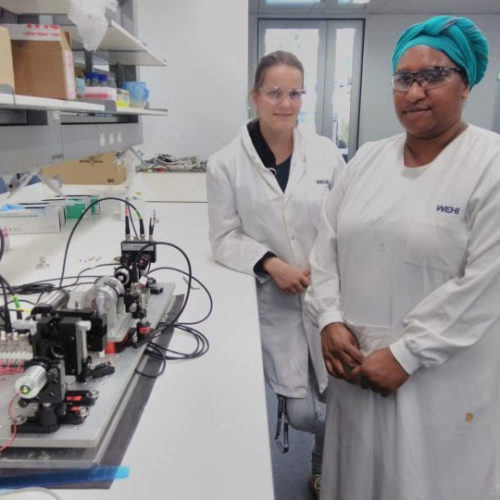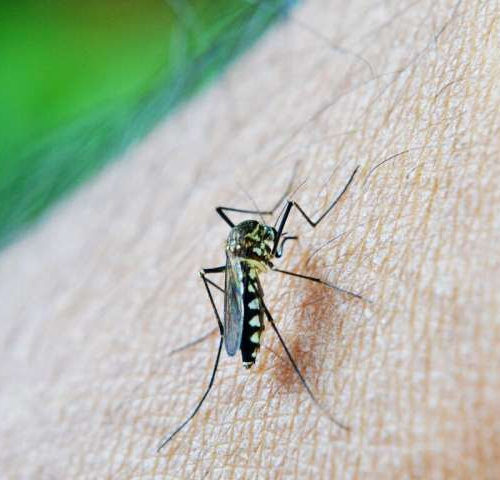by Johns Hopkins University Bloomberg School of Public Health Credit: CC0 Public Domain Blocking a key protein found in Anopheles gambiae mosquitoes—the principal vector for malaria transmission to humans in Africa—could thwart infection with malaria parasites and thus prevent them from transmitting the parasites to humans, according to a study from researchers at the Johns...
Tag: <span>malaria</span>
Unconventional T cells promote immunity to malaria
by Monash University Alphonse Levaran’s drawings of malaria parasites invading red blood cells in the year 1880, now updated with new research showing that the immune system adapts to protect us from disease. Credit: Artwork created by Dr Erica Tandoori. Monash University’s Biomedicine Discovery Institute researchers have made a vital breakthrough in the understanding of a...
mRNA vaccine yields full protection against malaria in mice
by Walter Reed Army Institute of Research Credit: CC0 Public Domain Scientists from the Walter Reed Army Institute of Research and Naval Medical Research Center partnered with researchers at the University of Pennsylvania and Acuitas Therapeutics to develop a novel vaccine based on mRNA technology that protects against malaria in animal models, publishing their findings in...
WRAIR, Duke scientists find evidence of monoclonal antibodies activity against malaria
WALTER REED ARMY INSTITUTE OF RESEARCH Scientists at Walter Reed Army Institute of Research, in a collaboration with Duke University, have confirmed that monoclonal antibodies can be an effective tool in the global fight against malaria. The study, led by Dr. Sheetij Dutta, chief of the Structural Vaccinology Laboratory at WRAIR, showed that mAbs such as CIS43...
Magnetic attraction: breakthrough test for malaria
Dr Stephan Karl, a Senior Research Fellow in Malaria and Vector Biology at James Cook University’s Australian Institute of Tropical Health and Medicine, has led an international study to field-test a new tool in the fight to eliminate the disease, which had 229 million reported cases in 2019. “Malaria is easily treated but it is actually hard...
Iron study combats anaemia with cutting-edge computer simulation
by Walter and Eliza Hall Institute of Medical Research Iron is an important component of the protein haemoglobin, which is contained in red blood cells and carries oxygen around the body. Credit: Haemoglobin and Sickle Cell Anaemia WEHI.TV animation. A new iron intervention study has determined which of the world’s low-and-middle income countries would benefit...
Extracts of the plant A. annua are active against SARS-CoV-2
by Freie Universitaet Berlin Chemists at the Max Planck Institute of Colloids and Interfaces (Potsdam, Germany) in close collaboration with virologists at Freie Universität Berlin have shown in laboratory studies that aqueous and ethanolic extracts of specially bred sweet wormwood plants (A. annua) are active against the new coronavirus that has caused the COIVID-19 pandemic....
A new weapon in the fight against sickle cell disease
A technology developed initially at Case Western Reserve University is behind the global launch by a Portland, Oregon, company of a new, faster and low-cost diagnostic test for sickle cell disease (SCD). The announcement by Hemex Health comes just in advance of World Sickle Cell Disease Awareness Day. SCD is the most well-known among a...
Blood test as a potential new weapon in the fight to eliminate malaria
Development and validation of serological markers for detecting recent Plasmodium vivax infection Plasmodium vivax is the most widespread malaria parasite worldwide, with up to two billion people at risk of infection. As well as causing illness and death in its ‘active’ stage of infection, the parasite can hide as hypnozoites, a dormant stage, in the...
Malaria vaccine: Could this ‘ingredient’ be the secret to success?
by University of Melbourne This ingredient is an essential component of the malaria parasite, a protein known as RPL6, which makes the parasite “visible” to a type of immune cells, the T cells, in the liver. The researchers added the protein to their existing vaccine strategy, known as ‘prime and trap’, and tested their discovery...








